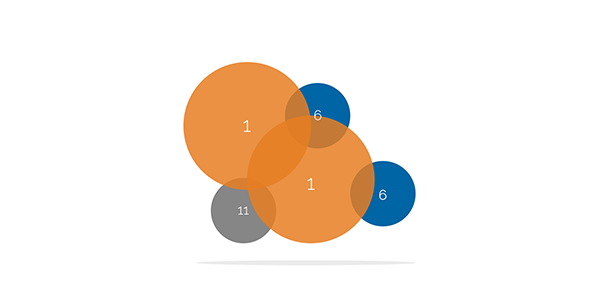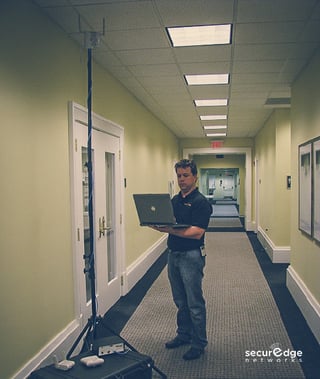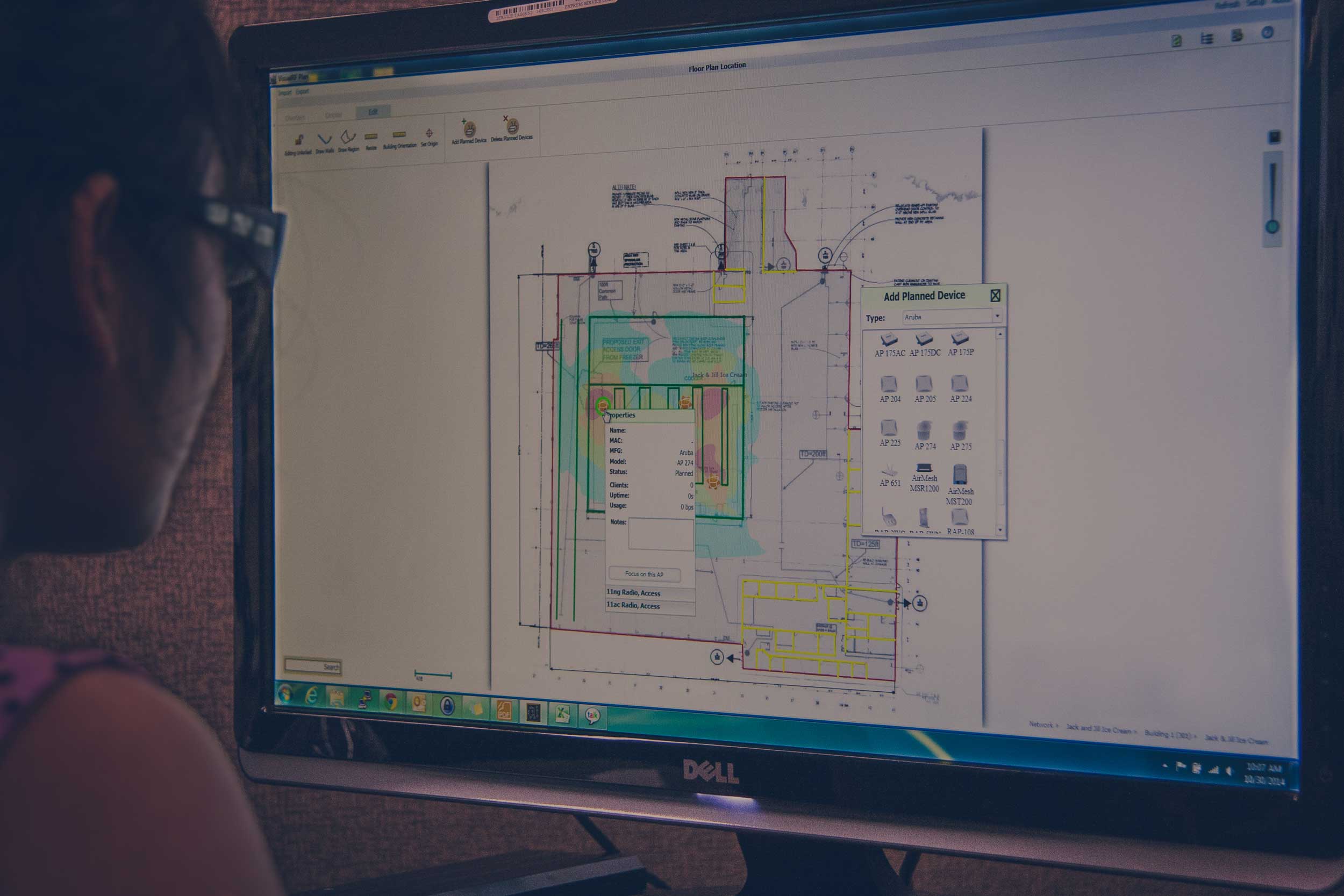The WiFi engineering process can be difficult and complex to navigate, even for seasoned IT managers. It takes years of experience, the right tools and the right amount of knowledge to guarantee your WLAN design is completed correctly the first time. So, whether you're updating your existing WLAN or looking to deploy a brand new wireless network, understanding exactly where to begin is critical to your success.
With that said, the first step in the process for every school, hospital, warehouse, hotel, retail business, or enterprise is focusing on your RF design and where you want to deliver Wi-Fi access to your end-users.
No, this doesn't mean buying a bunch of residential-grade routers and placing them sporadically throughout your environment (unfortunately, we've seen this too many times).
Other than understanding that you'll need to deploy commercial or enterprise-grade solutions, a proper RF design means focusing your design on three key areas:
- Coverage
- Capacity
- Performance
To help you create a better RF design, let's take a quick look at each different area.
Coverage
There are some variables when it comes to planning for proper coverage such as, the physical environment, power levels and antenna gain, however, it's easiest to think of coverage as the area where you want your end-users and devices to have access to the WLAN.
Think of coverage as being x number of access points to provide a specific amount of signal level in a given area.
Ask yourself:
- Where do I need coverage? Where throughout your environment do your end-users need to connect with your wireless network? (This includes both indoors and outdoors)
- What are the minimum throughput levels you need at each different location?
- What areas will need to support large numbers of devices and users (helpful for capacity planning)
Capacity
In order to plan and design your WLAN for capacity you need more information than what's typically needed for coverage.
In order to maximize your RF design for capacity you need to know four things:
- How many devices will be accessing the network in a given area
- What types of devices they are
- What capabilities those devices have
- What applications will these devices use
Always remember, simply adding more AP's to a specific high-density area is not a solution, in fact that more times than not only creates more problems.
Performance
Optimal WiFi performance comes down to how well you plan I.e. how much information you're able to acquire. The best way to achieve this is through a wireless site survey. An RF site survey will help you determine exactly what your wireless environment looks like.
Through RF heat maps you'll be able to visualize how saturated (2.4 GHz or 5GHz) the air is and which spectrum might be best for your clients.
In addition to WiFi mapping you'll want to decide how much bandwidth you'll need to properly support all of your users, applications and devices. 802.11ac is the current standard, providing both performance and scalability.
Creating the right design
Not all wireless network designs are created equal, getting it wrong can have huge consequences including money, time and even your job.
It's important to find a partner who has the right experience and knowledge as well as uses the right tools to get it done right the first time.






